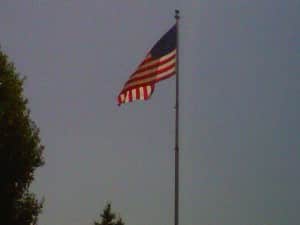
Why Capitalism Is Awesome
July/August 2013
By Chris Berg
Each year the glossy business magazine FastCompany releases a list of what it considers to be the “World’s 50 Most Innovative Companies.” This list is populated much as you would expect. In 2012 the leader was Apple, followed by Facebook, Google, and Amazon.com. Spot a theme? In the top 10, there are only two companies that are not primarily digital companies. One, Life Technologies, works in genetic engineering. (The other — try not to laugh — is the Occupy Movement. FastCompany describes them as “Transparent. Tech savvy. Design savvy. Local and global. Nimble.”) Not only are most of them digital firms, but they’re all flashy and unique, and they’re almost all household names.
Everybody from Forbes to BusinessWeek hands out most innovative company awards. They’re all pretty similar and predictable. But these lists have a perverse effect. They suggest that the great success of capitalism and the market economy is inventing cutting edge technology and that if we want to observe capitalist progress, we should be looking for sleek design and popular fashion. Innovation, the media tells us, is inventing cures for cancer, solar panels, and social networking.
But the true genius of the market economy isn’t that it produces prominent, highly publicized goods to inspire retail queues, or the medical breakthroughs that make the nightly news. No, the genius of capitalism is found in the tiny things — the things that nobody notices.
A market economy is characterized by an infinite succession of imperceptible, iterative changes and adjustments. Free market economists have long talked about the unplanned and uncoordinated nature of capitalist innovation. They’ve neglected to emphasize just how invisible it is. One exception is the great Adam Smith.
In his Wealth of Nations, the example he used to illustrate the division of labor was a pin factory. He described carefully the complex process by which a pin is made. Producing the head of the pin “requires two to three distinct operations.” To place the head on the wire is a “peculiar business.” Then the pins have to be whitened. The production of a pin, Smith concluded, is an 18-step task.
Smith was making an argument about specialization, but just as important was his choice of example. It would be hard to think of something less impressive, less consequential than a pin. Smith wanted his contemporaries to think about the economy not by observing it from the lofty heights of the palace or the lecture hall, but by seeing it from the bottom up — to recognise how a market economy is the aggregate of millions of little tasks. It’s a lesson many have not yet learned. We should try to recognise the subtleties of the apparently mundane.
CAPITALISM MEANS EFFICIENCY
Ikea’s Billy bookshelf is a common, almost disposable, piece of household furniture that has been produced continuously since 1979. It looks exactly the same as it did more than three decades ago. But it’s much cheaper. The standard model — more than six feet tall — costs $59.99. And from an engineering perspective the Billy bookshelf is hugely different from its ancestors.
In those 30 years the Billy has changed minutely but importantly. The structure of the back wall has changed over and over, as the company has tried to reduce the weight of the back (weight costs money) but increase its strength. Even the studs that hold up the removable book shelves have undergone dramatic changes. The studs were until recently simple metal cylinders. Now they are sophisticated shapes, tapering into a cup at one end on which the shelf rests. The brackets that hold the frame together are also complex pieces of engineering.
Ikea is a massive company. Tiny changes — even to metal studs — are magnified when those products are produced in bulk. There is no doubt somebody, somewhere in the Ikea product design hierarchy whose singular focus has been reducing the weight and increasing the strength of those studs. They went to sleep thinking about studs and metals and the trade-offs between strength and weight. Their seemingly inconsequential work helps keep Ikea’s prices down and its profits high. With each minute change to the shape of the Billy’s metal studs they earn their salary many times over.
Being massive, however, Ikea has an advantage: it is able to hire specialists whose job is solely to obsess about simple things like studs. Ikea is well-known for its more prominent innovations — for instance, flat-packing, which can reduce to one-sixth the cost of shipping — and the extremely low staffing of its retail stores.
For big-box retailers, innovation is about efficiency, not invention. Extremely resilient supply chains may not win glossy innovation awards but they are the source of much of our modern prosperity. But Ikea is big and famous. So let me suggest another icon of capitalist innovation and dynamism: pizza.
CAPITALISM TASTES BETTER, CHEAPER
Pizza is one of our most mundane and simple foods. It would be the last place most people would look for innovation and engineering. It is, at its most basic, a thin bread topped by tomatoes and cheese — a food of the poor of Naples exported, which is endlessly interpreted by the rest of the world.
Forty-one percent of Americans eat pizza at least once a week, whether purchased frozen and reheated in home ovens, delivered, taken away, or cooked from scratch at home. All of these choices are more complicated than they seem. Keeping a pizza crisp long out of the oven so that it can be delivered, or making sure it will crisp up in a variable home oven after having been frozen for weeks is anything but simple.
Moisture is the enemy. For frozen pizzas, this means that toppings have to be precooked precisely to avoid some ingredients being burned while others are still heating through. Frozen pizza takes a lot of abuse — it is partially thawed each time it is transferred from manufacturer to supermarket to home freezer. So the dough has to be precisely regulated to manage its water content.
Cheese freezes poorly, and consumers expect it to melt evenly across the base, so manufacturers obsess about cheese’s pH range and its water and salt content. And of course all these decisions are made with an eye on the customer’s budget and the manufacturer’s profitability. The consumers of familysized frozen pizzas tend to be extremely price sensitive. The opportunities for innovation in processes, equipment, automation, and chemistry are virtually endless.
It gets even more complicated when we factor in changing consumer tastes. The modern pizza customer doesn’t just want cheese, tomato, and pepperoni. As food tastes grow more sophisticated they look for more sophisticated flavors, even in frozen pizza. It’s one thing to master how cheddar or mozzarella melts. Dealing with more flavorful brie or smoked Gouda is another thing entirely. Like Ikea’s stud specialist, there are hundreds of people across the world obsessed with how frozen cheese melts in a home oven. These sorts of complications are replicated across every ingredient in this simple product. (How does one adapt an automated pepperoni dispenser to dispense feta instead?)
Customers demand aesthetic qualities too. Frozen products have to look authentic. Customers like their pizza crusts to have slight burn marks, even if home ovens won’t naturally produce them. So manufacturers experiment with all sorts of heating techniques to replicate the visual result of a woodfired oven.
Takeout pizza seems easier but has almost as many complexities. Some large pizza chains are slowly integrating the sort of sauce and topping applicators used by frozen goods manufacturers. Cheese is costly and hard to spread evenly. The pizza chain Dominos uses a proprietary “auto-cheese,” which takes standardized blocks of cheese and, with a push of a button, shreds them evenly across a base.
Moisture problems are even more endemic in takeout pizza. The cooked pizza has to survive, hot and crispy and undamaged, for some time before it is consumed. If the box is closed, the steam from the hot pizza seeps through the bread, making it soft and unappealing. But an open box will lose heat too quickly. Engineers have struck a balance. Vents in the box and plastic tripods in the centre of the pizza encourage airflow. Deliverers carry the pizzas in large insulated sleeves to keep the heat in but reduce risk of steam damage.
We could easily replicate this analysis for almost every processed or manufactured food in the typical supermarket. Then we could reflect on the complexity of serving food, not in a home kitchen, but on an airplane flying more than 600 miles per hour and 37,000 feet in the air, cooked in a tiny galley for hundreds of people at a time.
Some of the most extraordinary logistical accomplishments of the modern world are entirely unnoticed. Some — like airline food — we actively disparage, without recognizing the true effort behind them.
CAPITALISM IS ABOUT INNOVATION, AS WELL AS INVENTION
One of the great essays in the free market tradition is Leonard Read’s “I, Pencil.” Read was the founder of the influential American think tank the Foundation for Economic Education. In his essay, he adopts the perspective of an ordinary wooden lead pencil and purports to write his genealogy. He began as a cedar tree from North California or Oregon, was chopped down and harvested and shipped on a train to a mill in San Leandro, California, and there cut down into “small, pencil-length slats less than onefourth of an inch in thickness.”
Read’s point: “Not a single person on the face of this earth” knows how to make a pencil on their own. The construction of a pencil is entirely dispersed among “millions of human beings,” from the Italians who mine pumice for the eraser to the coffee manufacturers who supply their drinks to the cedar loggers in Oregon.
Read was vividly illustrating a famous point of Friedrich Hayek’s — these separate people manage, through nothing but the price system, to make something extraordinarily complex. None of the pumice miners intend to make a pencil. They simply want to trade their labor for wages. Adam Smith’s invisible hand does the rest. Read published his essay in 1958. The chemical formula for the eraser, known as the “plug,” has changed repeatedly over the half century since. The production is highly automated, and the supply lines are tighter.
Chemicals are added to keep the eraser from splitting. Synthetic rubber production in 2012 is much different than it was in 1958. These tiny plugs look pretty much the same but have evolved in a dozen different ways. “I, Pencil” magnificently captures the complexity of markets, but it doesn’t quite capture their dynamism. The millions of people involved in pencil production aren’t merely performing their market-allocated tasks but are trying to find new ways to make their tiny segment easier, cheaper, and more profitable. The pencil market — as far from a cutting-edge firm like Facebook as you could imagine — is still full of entrepreneurs trying to break apart established business models to shave costs and rationalize supply chains. In 1991 a gross of 144 simple, Chinese-made wood pencils sold on the wholesale market for $6.91. In 2004 that price had dropped to $4.48.
And this is before we consider the variety of pencils available to consumers — not just wooden ones of different shapes, sizes, colors, and densities, but mechanical pencils, jumbo sized children’s pencils, rectangular carpenters’ pencils (rectangular pencils can’t roll away) and on, and on, and on. It is to capitalism’s great disadvantage that there’s nothing inherently exciting about pencils. Humans like novelty. We like invention. We like high-technology breakthroughs that will change the world.
I, PORK
The most insightful book about capitalism published in the last decade isn’t a treatise on economics or philosophy but an art project. In Pig 05049, the Dutch artist Christien Meindertsma starkly shows photographs of the 185 separate products that are made from a single pig.
Every part of a slaughtered pig is sold and repurposed. Obviously, we’re familiar with pork and ham but how many people realise that pig bones are converted into a glue that holds sandpaper together? Or that pig fat is a constituent part of paint, helping its spread and giving it a glossy sheen? Pig parts are found in everything from yogurt to train brakes to photography paper to matches — even in bullets.
One response to Meindertsma’s book is to see it as simply a modern-day reworking of Leonard Read’s pencil. But it’s more than that. Pig 05049 reveals what a market economy tries to obscure: the deep complexities of individual products.
That single pig was stripped down and shipped to factories and markets across the world. It went into matches and copper and crayons and floor wax. These products are as mundane as can be imagined — what consumer spends more than a moment’s thought on which crayon to purchase, let alone how those crayons are produced? But as Meindertsma points out, the distinctive smell of many crayons comes from fatty acids, which in turn come from pig bone fat, used as a hardening agent.
Pig 05049 was published in 2007. The oleochemical industry — that is, the industry that derives chemicals from natural oils and fats — is one of the most innovative in the world. Like any industry experiencing rapid technological and scientific change, it is restructuring as well, moving production from Western Europe and the United States to China, Malaysia, and Indonesia.
Six years is a long time in a competitive marketplace. As simple as they seem, those crayons are changing: costs of production have been shaved down, raw materials are being utilized more efficiently, and supply lines are being tightened. Amazon now lists 2,259 separate products in the children’s drawing crayon category alone.
GOVERNMENT DOESN’T UNDERSTAND INNOVATION
If FastCompany has a warped view about the nature of innovation in a market economy, it is not alone. Governments do, too. The Australian federal government has its very own minister for innovation, and his Department of Industry, Innovation, Science, Research and Tertiary Education doles out grants for inventions and startups. Its Commercialisation Australia program sponsors inventors who “have transformed an innovative idea into reality.”
Innovation Australia funds grant-seekers to turn their “ground-breaking ideas into commercial products.” This is the invention fetish — the idea that technological progress occurs when dreamers have great ideas. All society needs to do is subsidize dreams into reality.
But ideas are the easy part. Getting things done is hard. Setting up a business, paring down costs, acquiring and retaining market share: those are the fields in a market economy where firms win or lose. The brilliance of the market economy is found in small innovations made to polish and enhance existing products and services. Invention is a wonderful thing. But we should not pretend that it is invention that has made us rich.
We have higher living standards than our ancestors because of the little things. We ought to be more aware of the continuous, slow, and imperceptible creative destruction of the market economy, the refiners who are always imperceptibly bettering our frozen pizzas, our bookshelves, our pencils, and our crayons.
https://www.cato.org/policy-report/julyaugust-2013/why-capitalism-awesome?utm_content=buffer1dde1&utm_source=buffer&utm_medium=twitter&utm_campaign=Buffer















